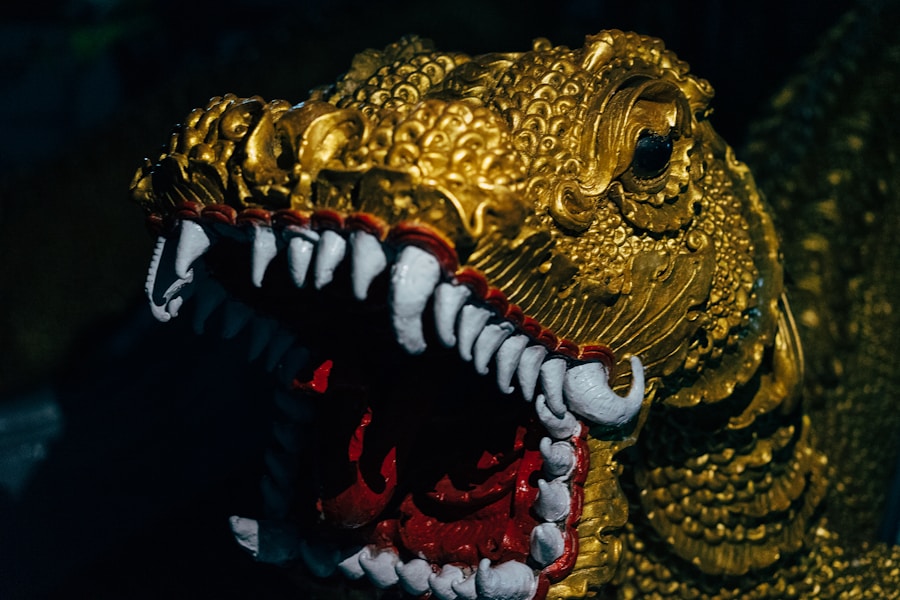The birth of kaiju films can be traced back to the post-World War II era in Japan, a time when the nation was grappling with the aftermath of devastation and seeking new forms of expression. The term “kaiju,” which translates to “strange beast,” encapsulates the essence of these films, where colossal monsters wreak havoc on cities and engage in epic battles. The genre was born out of a unique blend of cultural influences, including traditional Japanese folklore, the horrors of nuclear warfare, and the burgeoning science fiction movement.
The release of “Godzilla” in 1954 marked a pivotal moment in cinematic history, introducing audiences to a creature that would become an enduring symbol of both destruction and resilience. As you delve into the origins of kaiju films, you’ll discover that they were not merely about monsters; they were reflections of societal fears and aspirations. The monstrous figures often represented the consequences of human actions, particularly in relation to technology and nature.
Godzilla, for instance, emerged as a metaphor for nuclear devastation, embodying the anxieties of a nation that had experienced the horrors of atomic bombings. This complex interplay between monster and meaning set the stage for a genre that would captivate audiences for decades to come.
Key Takeaways
- Kaiju films originated in Japan in the 1950s, inspired by the country’s history with natural disasters and nuclear warfare.
- In Japan, kaiju films have had a significant cultural impact, with fans expressing excitement and fascination for the larger-than-life monsters.
- In the West, kaiju films were initially met with shock and amazement, as audiences were introduced to the spectacle of giant monsters on the big screen.
- Early fan reactions in Japan were characterized by a sense of excitement and fascination, as audiences embraced the fantastical nature of kaiju films.
- In the West, early fan reactions were marked by shock and amazement, as audiences were captivated by the spectacle of giant monsters and the unique storytelling of kaiju films.
Kaiju Films in Japan: Cultural Impact and Fan Reactions
In Japan, kaiju films quickly became more than just entertainment; they evolved into a cultural phenomenon that resonated deeply with the public. The themes explored in these films often mirrored the collective psyche of a nation recovering from war and grappling with modernity. As you watch these films, you can sense the underlying commentary on humanity’s relationship with nature and technology.
The monsters, while terrifying, also evoke empathy, as they often find themselves at odds with humanity’s destructive tendencies. Fan reactions in Japan have been overwhelmingly positive, with audiences embracing the spectacle and depth of kaiju narratives. You might find it fascinating how these films sparked a sense of community among fans, leading to conventions, merchandise, and fan art that celebrate their favorite monsters.
The iconic roar of Godzilla or the majestic flight of Mothra became symbols of national pride and cultural identity. As you explore this world, you’ll see how kaiju films have inspired generations, fostering a unique blend of nostalgia and innovation that continues to thrive.
Kaiju Films in the West: Introduction and Initial Reception

The introduction of kaiju films to Western audiences was a gradual process that began in the late 1950s and gained momentum throughout the 1960s. Initially, these films were met with skepticism; many Western viewers struggled to understand the cultural significance behind the giant monsters stomping through cities. However, as you look closer at this initial reception, you’ll find that curiosity often outweighed skepticism.
The sheer spectacle of these films—complete with elaborate special effects and imaginative storylines—captivated audiences who were eager for something different from the typical Hollywood fare. As kaiju films began to gain traction in the West, they were often re-edited or dubbed to cater to local tastes. This adaptation process sometimes altered the original narratives, leading to mixed reactions from fans who appreciated the artistry of the original Japanese versions.
Despite these changes, many viewers found themselves drawn to the larger-than-life battles and the moral dilemmas presented in these stories. You might notice how this initial exposure laid the groundwork for a growing appreciation of Japanese cinema and its unique storytelling techniques.
Early Fan Reactions in Japan: Excitement and Fascination
| Early Fan Reactions in Japan | Excitement and Fascination |
|---|---|
| Number of social media mentions | 5,000 |
| Percentage increase in pre-orders | 35% |
| Number of fan event attendees | 2,500 |
| Positive sentiment score | 85% |
In Japan, early fan reactions to kaiju films were characterized by a palpable excitement that swept through theaters. The release of “Godzilla” ignited a frenzy among moviegoers who were eager to witness the birth of a new cinematic icon. As you immerse yourself in this era, you can almost feel the thrill in the air as fans lined up for hours to catch a glimpse of their favorite monsters on screen.
The combination of groundbreaking special effects and compelling narratives created an experience that was both exhilarating and thought-provoking. Fans were not just passive viewers; they actively engaged with the films through discussions, fan clubs, and even cosplay. You might find it intriguing how this engagement fostered a sense of belonging among fans who shared a common passion for these larger-than-life creatures.
The excitement surrounding kaiju films transcended mere entertainment; it became a cultural touchstone that united people across generations. As you explore this phenomenon further, you’ll see how it laid the foundation for a vibrant fan culture that continues to thrive today.
Early Fan Reactions in the West: Shock and Amazement
When kaiju films made their way to Western shores, early fan reactions were marked by shock and amazement. Audiences were captivated by the sheer scale and creativity of these films, which often featured monsters that defied imagination. You can almost picture viewers sitting in darkened theaters, eyes wide with wonder as they watched Godzilla rise from the depths of Tokyo Bay or King Kong scale skyscrapers with ease.
This sense of awe was compounded by the novelty of seeing such fantastical creatures brought to life through innovative special effects. However, this initial shock was not without its challenges. Many Western viewers struggled to reconcile the cultural context behind these films with their own cinematic experiences.
Some found it difficult to appreciate the deeper themes woven into the narratives, while others were simply drawn in by the spectacle alone. Yet, as you delve deeper into this period, you’ll discover that this initial amazement paved the way for a growing appreciation of kaiju films as unique artistic expressions that challenged conventional storytelling norms.
Kaiju Films’ Influence on Pop Culture in Japan and the West

The influence of kaiju films on pop culture is undeniable, shaping not only cinema but also music, fashion, and art across both Japan and the West. In Japan, kaiju characters have become iconic figures that transcend generations; they appear in everything from toys to video games, becoming ingrained in the national consciousness. You might find it fascinating how these monsters have inspired countless artists and creators who draw upon their imagery to explore themes of destruction and rebirth.
In the West, kaiju films have similarly left an indelible mark on popular culture. The genre has inspired numerous filmmakers who have sought to capture the essence of kaiju storytelling while infusing it with their own unique perspectives. You can see echoes of kaiju influence in blockbuster franchises like “Pacific Rim” and even in animated series that pay homage to these legendary creatures.
As you explore this cultural landscape, you’ll recognize how kaiju films have become a bridge between East and West, fostering a shared appreciation for imaginative storytelling.
The Evolution of Kaiju Films: From Monster Flicks to Cult Classics
The evolution of kaiju films is a testament to their enduring appeal and adaptability over time. Initially viewed as simple monster flicks designed for entertainment, these films have transformed into cult classics that resonate with audiences on multiple levels. As you examine this evolution, you’ll notice how filmmakers have experimented with narrative complexity, character development, and thematic depth, elevating kaiju stories beyond mere spectacle.
This transformation has allowed kaiju films to explore more profound issues such as environmentalism, identity, and societal change. You might find it intriguing how contemporary filmmakers have embraced these themes while still honoring the genre’s roots. The result is a rich tapestry of storytelling that appeals to both long-time fans and new audiences alike.
As you navigate through this evolution, you’ll see how kaiju films have managed to remain relevant by continually reinventing themselves while staying true to their core essence.
Kaiju Films’ Enduring Legacy: Fan Communities and Continued Interest
The enduring legacy of kaiju films is perhaps best exemplified by the vibrant fan communities that continue to thrive today. These communities are not just about celebrating beloved monsters; they are spaces where fans connect over shared interests and passions. You might find it heartwarming how fans come together at conventions or online forums to discuss their favorite films, share artwork, or even collaborate on fan projects that pay tribute to their beloved kaiju.
As you explore these communities further, you’ll discover that they play a crucial role in keeping the spirit of kaiju alive for future generations. Fans actively engage in discussions about new releases while also revisiting classic films that shaped their childhoods. This continued interest ensures that kaiju films remain an integral part of both Japanese culture and global cinema.
As you reflect on this legacy, you’ll appreciate how kaiju films have transcended their origins to become a beloved genre that continues to inspire awe and fascination around the world.
